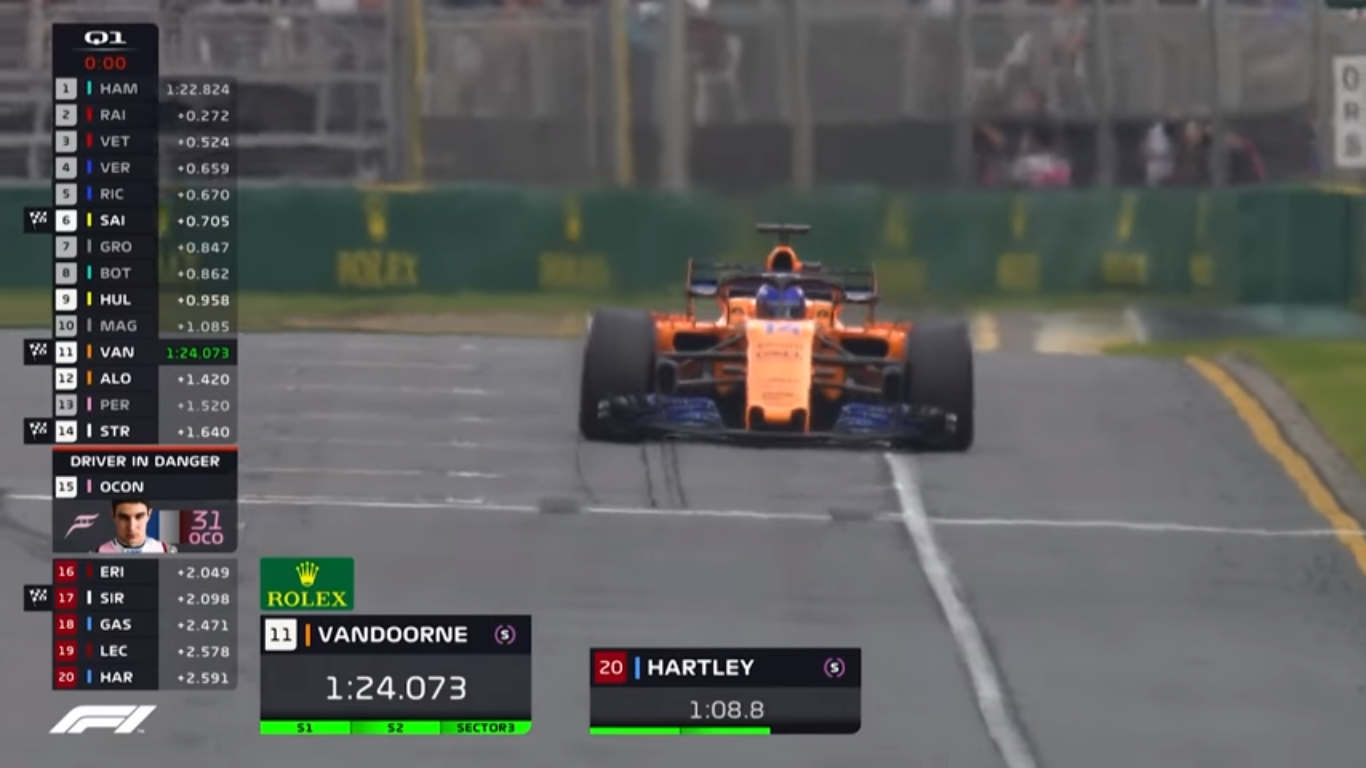Both Formula 1 and MotoGP remain outside of Europe, as both championships embrace round two of their respective seasons.
For MotoGP, it is a trip to South America for the Argentine round of the series, whilst Formula 1 heads to the Bahrain International Circuit. The action from Bahrain airs live across Sky Sports and Channel 4 for the third year in succession.
With Channel 4’s Lee McKenzie reducing her Formula 1 commitments further this season, her former BBC F1 colleague Tom Clarkson is super substitute, for Bahrain at least. Mark Webber and Susie Wolff join Steve Jones in Bahrain. The channel’s free-to-air race day schedule changes slightly for 2018 to cater for the F1 race starting ten minutes later than in previous years.
The Formula Two season roars into life in Bahrain, with races on Saturday and Sunday. Elsewhere, the British Superbikes returns on Easter Monday (April 2nd) at Donington Park, with action remaining live on Eurosport. Rachel Stringer joins the team as race reporter, Stringer having previously covered a variety of events for the BBC and BT Sport.
Both the domestic and world touring car series’ return as well, although the latter has a new name. The former World Touring Car Championship is back, but now known as the World Touring Car Cup as the series no longer has manufacturer participation.
Channel 4 F1
Sessions
06/04 – 11:55 to 14:10 – Practice 1
06/04 – 15:55 to 17:35 – Practice 2 (More4)
07/04 – 13:00 to 14:30 – Practice 3
07/04 – 14:55 to 17:45 – Qualifying
08/04 – 15:00 to 18:45 – Race
=> 15:00 – Build-Up
=> 15:45 – Race
=> 18:20 – Reaction
Sky Sports F1
Sessions
06/04 – 11:45 to 13:50 – Practice 1 (also Sky Sports Main Event from 12:00)
06/04 – 15:45 to 17:50 – Practice 2 (also Sky Sports Main Event)
07/04 – 12:45 to 14:15 – Practice 3
07/04 – 15:00 to 17:45 – Qualifying (also Sky Sports Mix)
=> 15:00 – Pre-Show
=> 15:55 – Qualifying
08/04 – 14:30 to 18:55 – Race
=> 14:30 – Pit Lane Live
=> 15:30 – On the Grid
=> 16:05 – Race
=> 18:30 – Paddock Live
Supplementary Programming
04/04 – 20:30 to 21:00 – The F1 Report: Preview
05/04 – 13:00 to 14:00 – Driver Press Conference
05/04 – 20:45 to 21:00 – Paddock Uncut
07/04 – 17:45 to 18:20 – The F1 Show
11/04 – 20:30 to 21:00 – The F1 Report: Review (also Sky Sports Mix)
BBC Radio F1
05/04 – 20:00 to 20:30 – Preview (BBC Radio 5 Live)
06/04 – 11:55 to 13:35 – Practice 1 (BBC Radio 5 Live Sports Extra)
07/04 – 12:55 to 14:05 – Practice 3 (BBC Radio 5 Live Sports Extra)
07/04 – 15:55 to 17:05 – Qualifying (BBC Radio 5 Live Sports Extra)
08/04 – 16:00 to 19:00 – Race (BBC Radio 5 Live Sports Extra)
MotoGP – Argentina (BT Sport 2)
06/04 – 12:45 to 20:15 – Practice 1 and 2
07/04 – 12:45 to 20:15
=> 12:45 – Practice 3
=> 16:00 – Qualifying
08/04 – 13:30 to 21:00
=> 13:30 – Warm Ups
=> 15:15 – Moto3
=> 17:00 – Moto2
=> 18:30 – MotoGP
=> 20:00 – Chequered Flag
MotoGP – Argentina (Channel 5)
10/04 – 19:00 to 20:00 – Highlights
British Superbikes – Donington Park
01/04 – 15:30 to 18:00 – Race 1 (Eurosport 2)
02/04 – 13:00 to 18:00 – Race 2 (Eurosport 2)
04/04 – 20:00 to 21:00 – Highlights (ITV4)
British Touring Car Championship – Brands Hatch (ITV4)
08/04 – 10:15 to 18:20 – Races
Formula Two – Bahrain (Sky Sports F1)
06/04 – 09:30 to 10:20 – Practice
06/04 – 17:55 to 18:35 – Qualifying
07/04 – 11:05 to 12:15 – Race 1
08/04 – 12:10 to 13:10 – Race 2
IndyCar Series – Phoenix (BT Sport 3)
07/04 – 02:00 to 05:00 (Saturday night) – Race
World Rally Championship – France
Every stage live via WRCPlus.com
06/04 – Day 1 Highlights
=> 22:15 to 22:45 (BT Sport 1)
=> 22:30 to 23:00 (Motorsport.tv)
07/04 – 10:00 to 11:00 – Live: Stage 7 (BT Sport 1)
07/04 – Day 2 Highlights
=> 21:45 to 22:15 (BT Sport 1)
=> 22:30 to 23:00 (Motorsport.tv)
08/04 – 11:00 to 12:30 – Live: Stage 12 [Power Stage] (BT Sport 2)
08/04 – Day 3 Highlights
=> 21:00 to 21:30 (BT Sport 2)
=> 22:30 to 23:00 (Motorsport.tv)
11/04 – 19:00 to 20:00 – Highlights (Channel 5)
World Touring Car Cup – Marrakech
08/04 – 10:30 to 11:50 – Qualifying (Eurosport)
08/04 – 16:30 to 18:55 – Race (Eurosport 2)
As always, if the schedules change, I will update the above times.
Update on April 3rd – I would not normally update schedules retrospectively, but it is important to note that British Superbike’s first race of the weekend from Donington Park was moved from Monday to Sunday, avoiding the torrential weather that hit the circuit yesterday morning. I have updated the above for future reference to show what actually happened.
In other news, Ted Kravitz (and his Notebook!) is not part of Sky Sports F1’s Bahrain Grand Prix team this weekend as his wife has given birth to a baby girl!
Update on April 4th – As a result of Ted’s absense, Paddock Live following the race on Sunday has been cut to 25 minutes from its normal 40 minute length.






